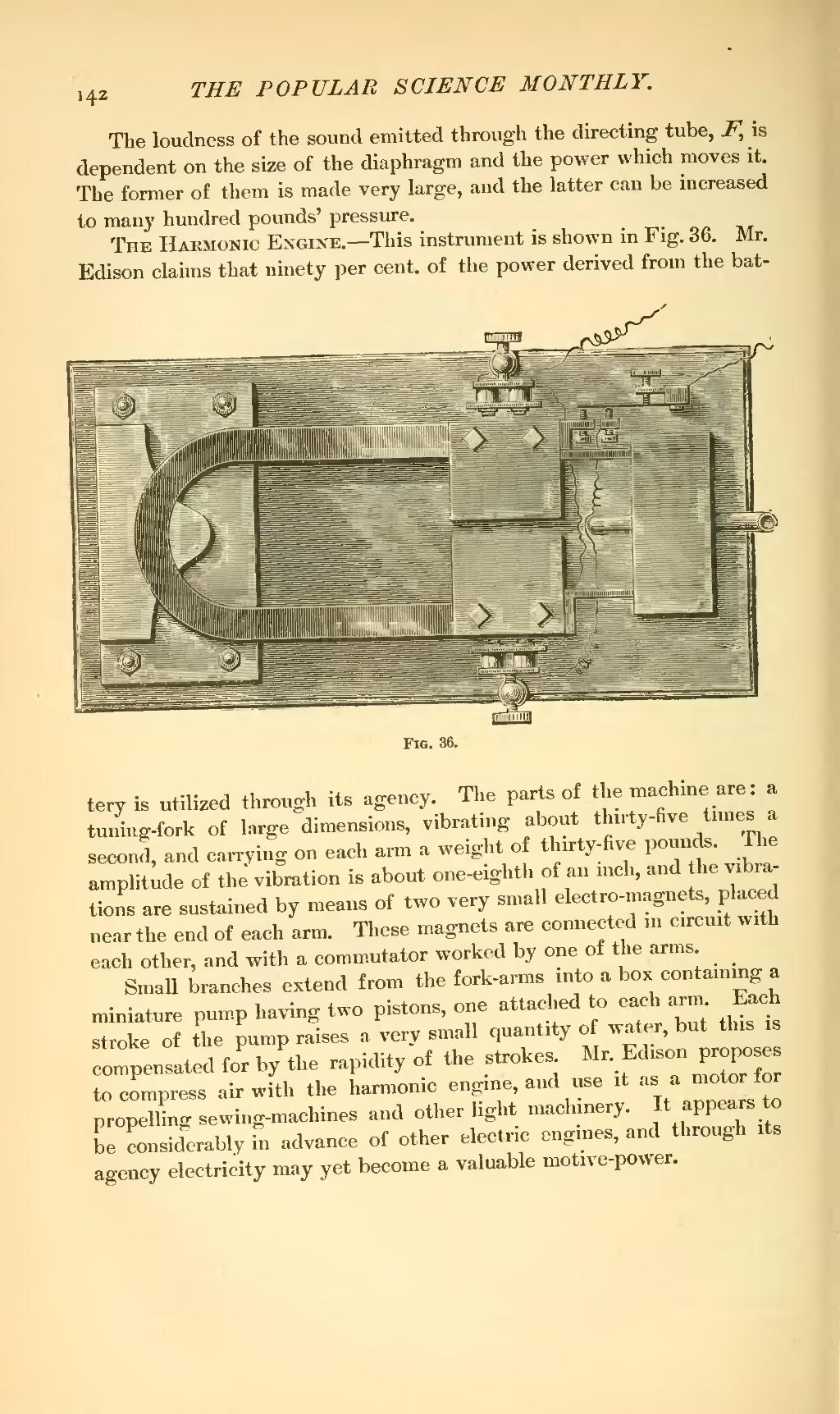The loudness of the sound emitted through the directing tube, F, is dependent on the size of the diaphragm and the power which moves it. The former of them is made very large, and the latter can be increased to many hundred pounds' pressure.
The Harmonic Engine.—This instrument is shown in Fig. 36. Mr. Edison claims that ninety per cent, of the power derived from the battery

Fig. 36.
is utilized through its agency. The parts of the machine are: a tuning-fork of large dimensions, vibrating about thirty-five times a second, and carrying on each arm a weight of thirty-five pounds. The amplitude of the vibration is about one-eighth of an inch, and he vibrations are sustained by means of two very small electro-magnets, placed near the end of each arm. These magnets are connected in circuit with each other, and with a commutator worked by one of the arms.
Small branches extend from the fork-arms into a box containing a miniature pump having two pistons, one attached to each arm. Each stroke of the pump raises a very small quantity of water, but this is compensated for by the rapidity of the strokes Mr. Edison proposes to compress air with the harmonic engine, and use it as a motor for propelling sewing-machines and other light machinery. It appears to be considerably in advance of other electric engines, and through its agency electricity may yet become a valuable motive-power.

